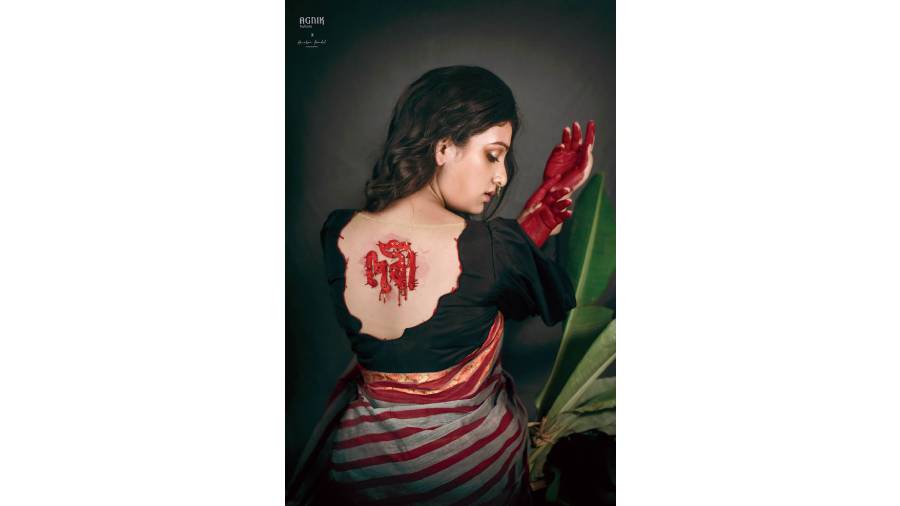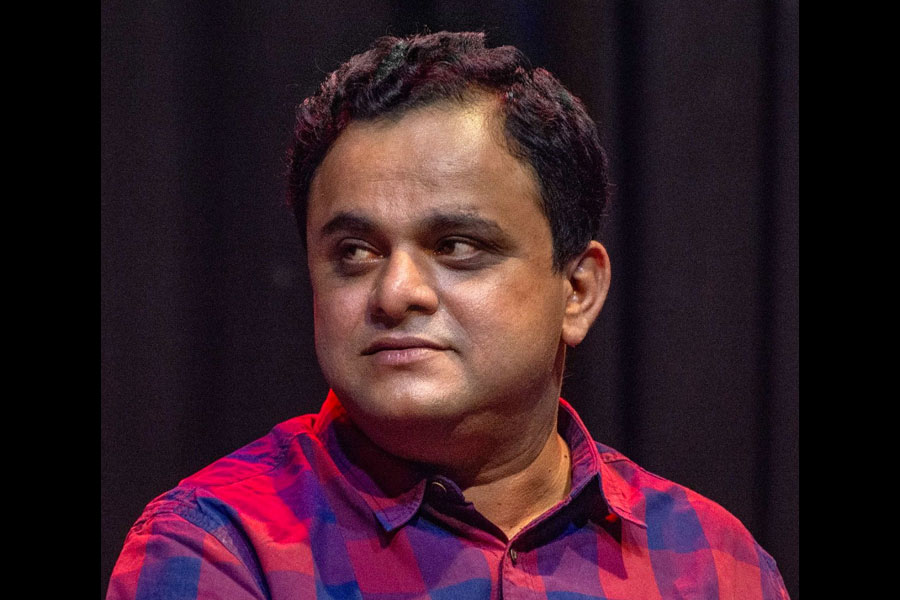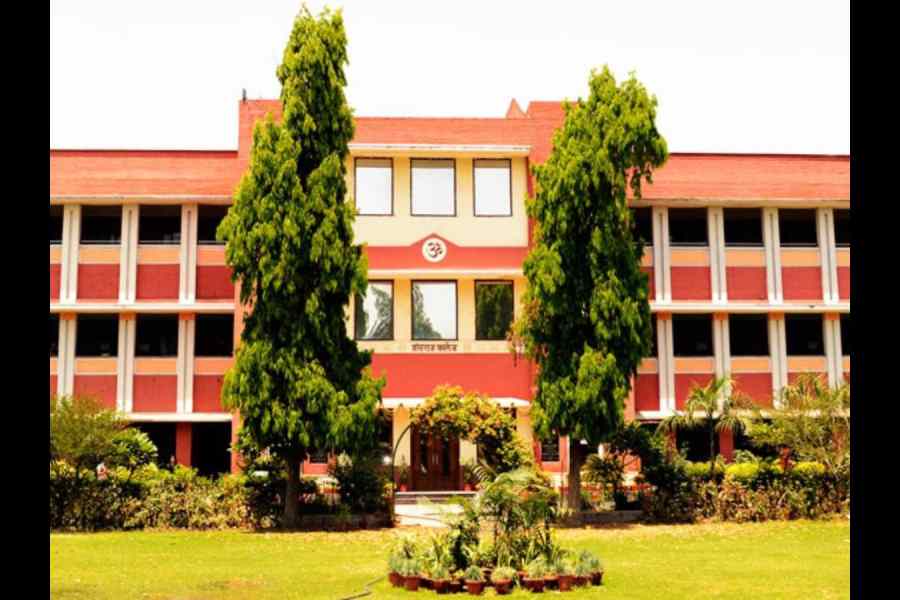On the birth centenary of the renaissance man of Bengal, Satyajit Ray, Calcutta-based fashion designer Agnik Ghosh unveiled Dwandwa — the conflict within— a capsule collection of ethnic ensembles for men and women, fashioned from the characters, scenes and motifs of Devi. Red, black and subtle shades of beige and sandalwood in traditional kantha embroidery evoke the inner turmoil of Doyamoyee in Devi, and the theme of duality, of being torn between godliness and womanhood. A candid chat with Agnik, who helms the home-grown apparel brand Agnik Kolkata (@agnik_kolkata on Instagram).

Designer Agnik Ghosh
Tell us about the inception of Agnik Kolkata and its ideology?
I am a NIFT graduate. I was working under a designer, and then I thought of doing something on my own. The starting point was that whatever I do should be from my home town, Calcutta, and about Bengali culture. It is more like a happy juxtaposition of not just Bengali elements, but a lot of other inspirations that have come and gone throughout my design career. Every time we make something, we inject a tinge of Bangaliana into it so that it becomes much more apt to the time and place where we are staying right now, and people can connect to it more emotionally.
Tell us how Satyajit Ray has been a dominant influence in your collections?
Oh, Satyajit Ray has been a major inspiration. Last year we created a one-piece, a sari with a blouse entirely inspired by Apur Sansar and we hand-painted every scene possibly from the story in our style. In the middle of 2020, I kind of did a short photostory which was named Dwandwa, on Satyajit Ray’s Devi, which inspired me to do a whole collection this year. Since Devi had been done by a lot of designers in the city, I wanted to do it differently. The film Devi talks about religious dogmatism, superstition, pain, sorrow, conflict within a woman, and the conflict and the pain inspired me to create a collection. It was more like a narrative and I didn’t want to just take the poster of Devi and print it on the sari. We took screenshots of some scenes from the film and turned them into embroidery.
Will you take us through the concept of a few pieces in the Dwandwa collection?
There is this blouse called Raktalekha — it is a 17th-century bishop-sleeve blouse from the front, very British colonial, conservative and pious but there’s a huge cut at the back which looks like someone has scraped off your skin and tattooed the word Devi. It is embroidered with crystals and aari technique on a silk net to mimic a skin that has been peeled off, for the word Devi to be written on it. It shows blood oozing out, so we had to dye the fabric at places to give that blood-stained look. There is also this ensemble that has the face of Sharmila Tagore as Doyamoyee in the film, done in kantha embroidery at the back of a simple boat-neck blouse.
Where do you draw from for the art embroideries in your collections?
I am a fan and follower of the Bengal art movement, which comprises famous artists like Abanindranath Tagore, Jamini Roy, Nandalal Bose — the entire Santiniketan, Visva-Bharati clan. Rabindranath Tagore’s poems, songs, and stories are more like a fine strain imbued throughout the collections. Nandalal Bose’s tempera technique, Abanindranath Tagore’s wash technique are infused in my techniques and artworks. My niche is all about tales of Bengal, lost fables of Bengal especially, 16th-century babu culture, British Regency period and even the Pala dynasty art, the Sena art, the Buddhist influence on Bengal, and so on. Over time I have read and researched about them and we came up with our distinct style of painting. The painting gets transformed into embroideries too. I draw inspiration from Bengali movies, poems, works by Sarat Chandra Chattopadhyay, books on the history of Bengal and more.
What about the colour palette, and style of your designs?
Bengal has myriad shades, so I try to incorporate that. Every colour has distinct moods, and our colour palette keeps changing with the colour story for our pieces. As for the style, you could call it fusion, or if we are talking about ethnic, then it’s co-ethnic. Fusion would be a better word — our style involves silhouettes, motifs, and techniques inspired from the East and West. The art embroideries are a mixture of classical realism with a bit of pop-art. We have made stuff like kimono jackets with Jamini Roy on it, so I call it juxtaposed, you could call it fusion.
What kinds of fabric do you work on?
Yes, this is one of the very important things because today it is essential to make clothes which are easily available for people of all strata of the community. I make my clothes out of fabrics that are easily available and cost-friendly. We specifically stick to silk and cotton handloom weaves. All types of surface embroidery and surface ornamentation techniques work beautifully on silk and cotton. We do menswear, womenswear, accessories, kidswear. The very recent collection Borgee Elo Deshe is only for men and Devi for both men and women.
Which western fashion designers have impacted your work?
I have a ton of favourite designers from everywhere in the world, and what inspires me the most is the ethos of their entire collection. Some designers talk about a story and I am a person who loves stories and articulated motifs. John Galliano, Alexander McQueen, Christian Dior, Oscar De la Renta, are some of my major inspirations, to name a few.
And, in India?
In India, the one man whom the world knows, Sabyasachi Mukherjee. I have followed his work from my schooldays. I love his work because of his stories, and ethos, and the way the stories move. He kind of paved the path for more and more people like me to think of conscious designing.
While your brand ethos is tracing back to the roots, how do you think fashion designers like you can refashion that for 21st-century fashion?
Yes, so this is a very good question. You can go global only if you know your roots well. Every famous designer in history must have travelled the world and their collections might have been inspired by geishas of Japan, but at the end of the day they have come back to their roots; they have thought that how these geishas of Japan could be more Parisian, or New York Donna Karan style or Calvin Klein style. That is why I love Sabya (Sabyasachi Mukherjee) because apart from his ethnicwear range, there are certain kinds of clothing that he does which has this Western-European feel, but he injects an Indian blood into them, making them look fantabulous! If I am a Bengali who is from a Bengali household, living 25 years in the city, and am making a brand, the only thing that I can do is branch out from my roots.
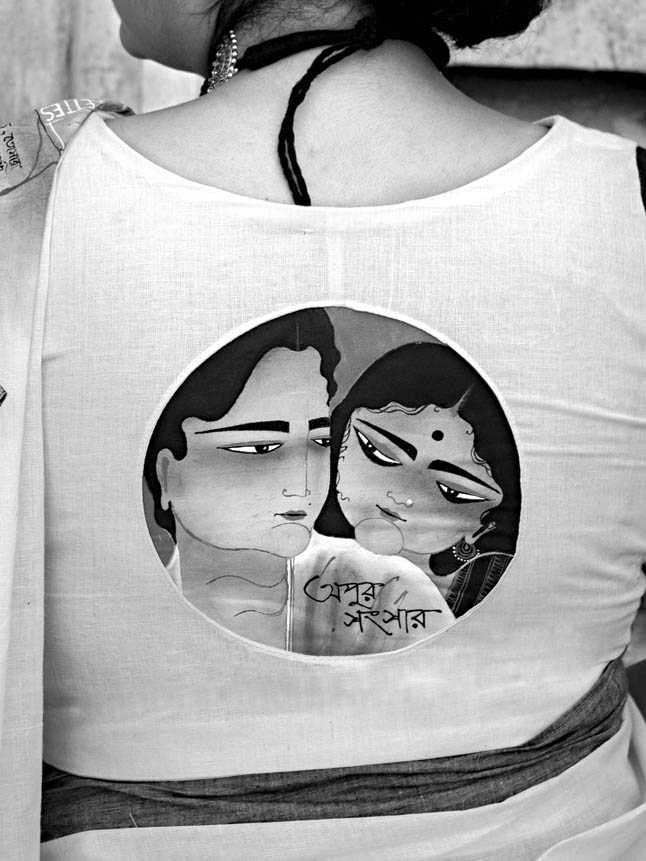
Maya’r Badhon was inspired by Satyajit Ray’s Apur Sansar

3D, embroidered blooms iconising popular floral motifs of Bengal from the collection Maya Van
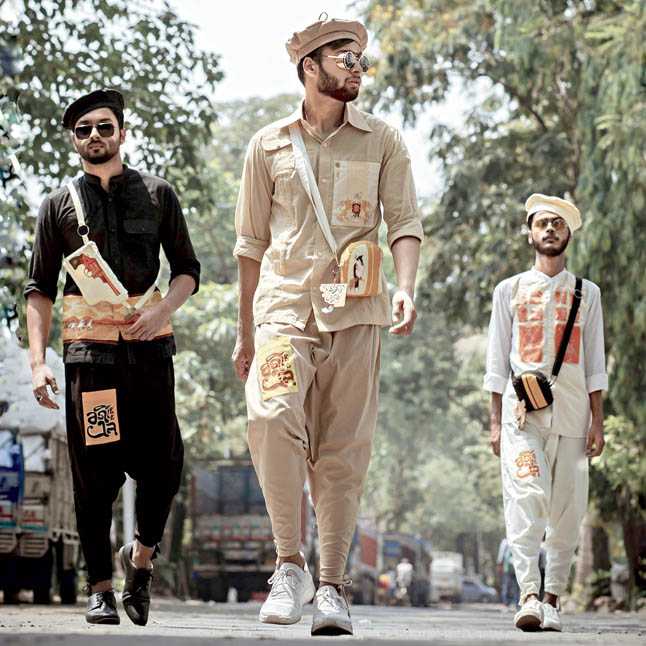
Ensembles from Borgee elo Deshey, menswear 2021
Pictures courtesy: Agnik

